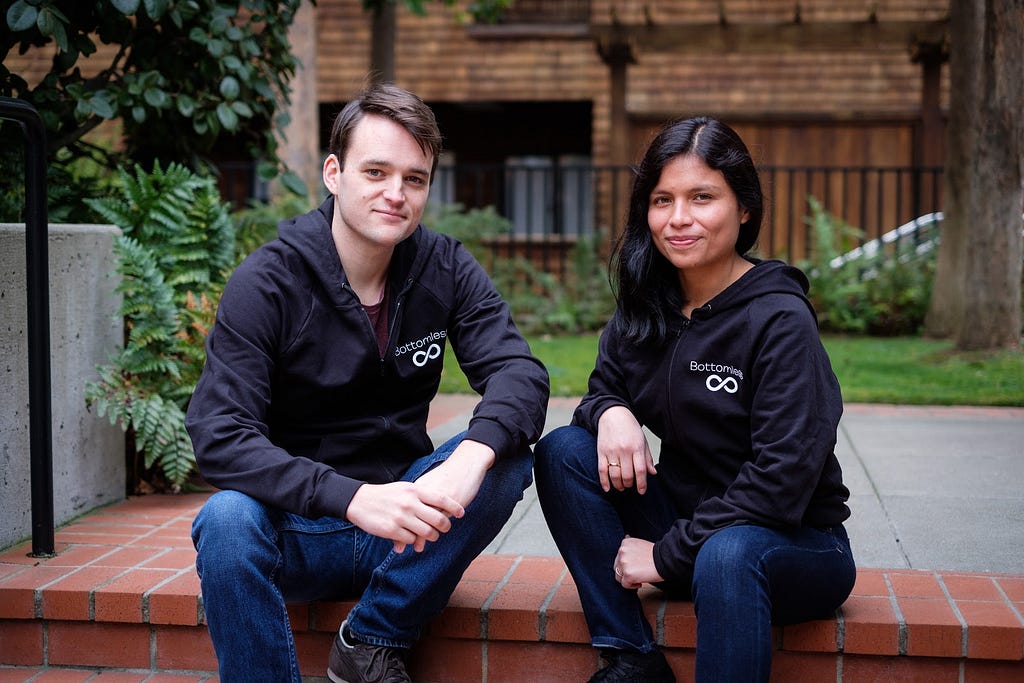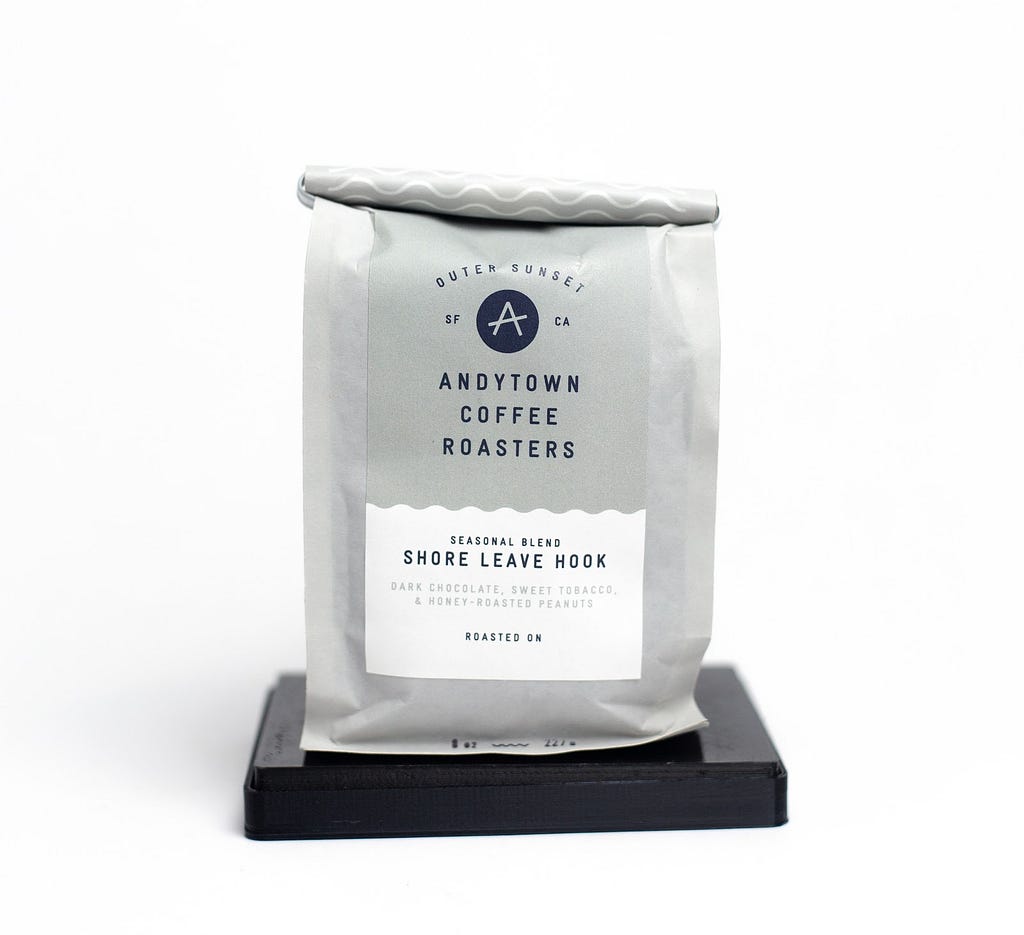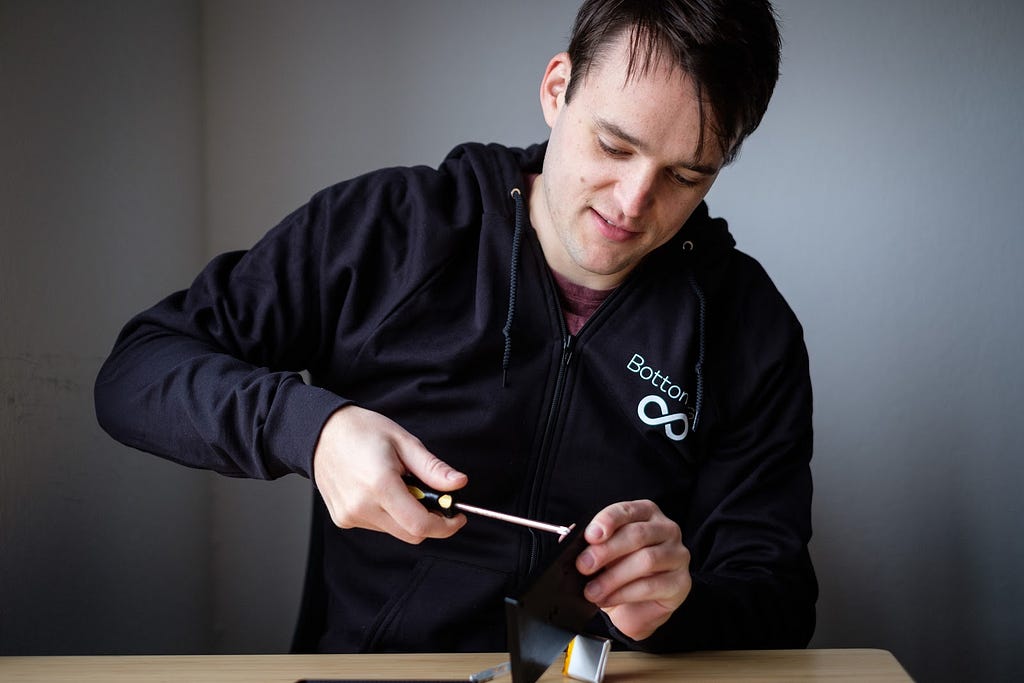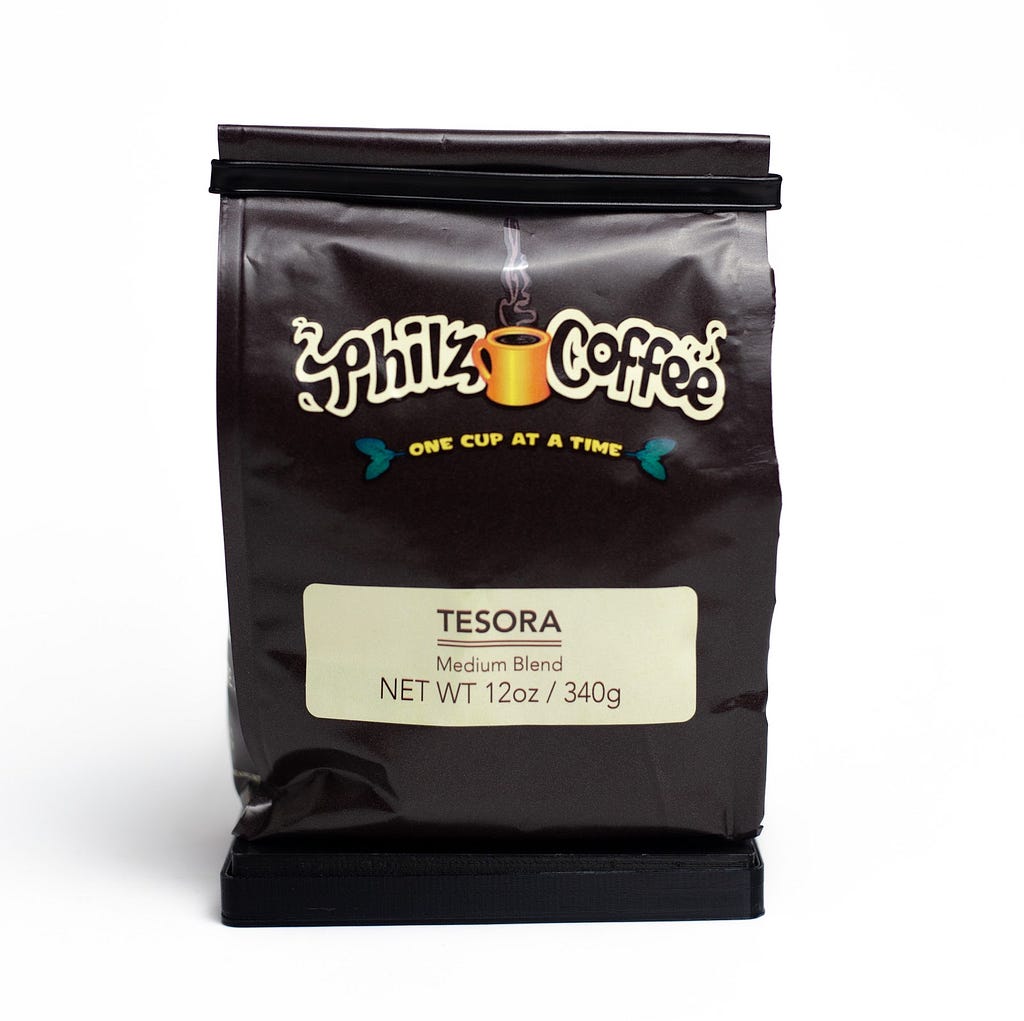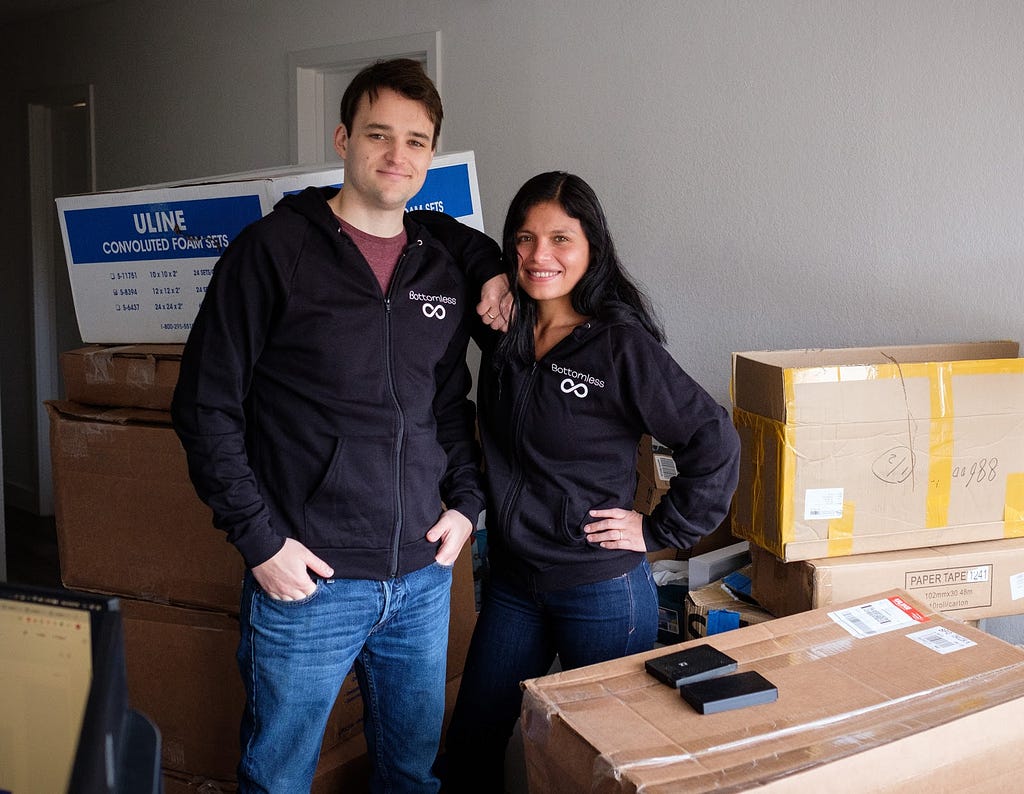Latest news about Bitcoin and all cryptocurrencies. Your daily crypto news habit.
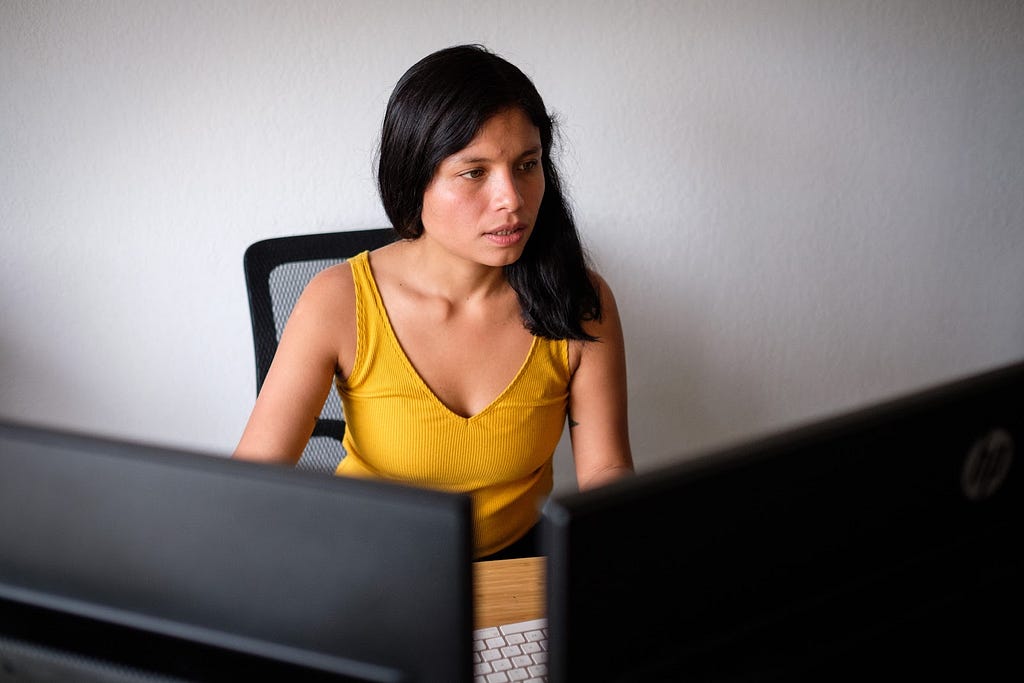 Liana and her co-founder/husband Michael have created the first coffee delivery service that uses a smart scale to figure out the perfect time to automatically reorder.
Liana and her co-founder/husband Michael have created the first coffee delivery service that uses a smart scale to figure out the perfect time to automatically reorder.
What’s your background, and what are you working on?
I’m Liana Herrera, co-founder of Bottomless, a coffee delivery service that uses a smart scale to figure out the perfect time to ship a re-order.
It’s simple, customers get the scale when they buy the first bag of coffee. Coffee is roasted to order and shipped directly to customers. Since the coffee never sits on a shelf, it’s much fresher than can be bought anywhere else.
We founded Bottomless in 2016 and bootstrapped it until 2018. We’ve hand-built hundreds of prototypes. On the coffee front, we’ve partnered with 15 of the top roasters on the West Coast. Some of the more well known ones are Philz Coffee, Caffe Vita and Bird Rock. Our retention has been excellent and we’re growing fast.
Our personal story is not typical. I’m from Lima, Peru and I moved to the USA when I was 18 to study english. I bought into “the American dream” and decided to stay. Since then, I’ve gotten a degree in accounting, became a citizen and built a career in software consulting. My co-founder Michael Mayer is from Portland, OR. He earned a degree in Economics but is a self-taught hacker by trade.
I should also mention that we are a husband and wife team. We met in college and are both obsessed with business and technology. We see our relationship as a competitive advantage. Obsessive focus builds great businesses and our relationship enables that.
What motivated you to get started with your company?
Managing household stock levels was frustrating. We always seemed to be out of one thing or another. When we thought about it, we realized that restocking was a universal problem.
But if it was such a big problem, why was there no great solution? Subscriptions should be a solution, but they don’t work well for items that aren’t used on a set schedule. It seemed to us that if we could capture data on usage and stock levels in a passive way, we could solve the problem. Thus, Bottomless the concept, was born.
To start, we decided to sell freshly roasted coffee because it’s something we’d would run out of all the time. We loved to buy straight from the roaster to maximize freshness, but this was hard to manage. We’d always end up having to run to the store.
At the same time, we were in a great position to start a company. After college, we kept our personal expenses low while building our careers. This allowed us to live off just my salary. We decided to give it a shot and bootstrap a pilot.
I also believed that if there was one person who could figure this out, it was Michael. Bottomless required building quite a few unrelated technologies, which requires a hacker mindset. Michael is a self-taught coder who is an independent thinker by nature, so he was up for the job.
What went into building the initial product?
A lot of sweat equity.
In the beginning, we built the simplest thing possible to test if the concept would work.
We hacked together a scale prototype. The electronics were a jumble of breakout boards and wires. The scale enclosure was 3D printed and something of an eye sore. The firmware was two tutorials mashed together.
Once we had a functional prototype, we made five of them and got them into the hands of friends. The goal was to test if people would leave their coffee on a scale, and if we could reorder at the right time. It turns out that they would and we could!
The first version of our ML system was Michael looking at graphs.
The first version of the web application was bare bones. We had no onboarding flow, but you could put in payment info and pick a product.
To bootstrap supply, we bought coffee from roaster websites using our customers’ addresses.
This early pilot gave us the confidence to put more resources into fleshing things out. Today, we’re a lot further along. Our hardware is still 3D printed, but it’s ready for injection molding. We’ve manufactured our first run of printed circuit boards. The firmware is now much more stable.
How have you attracted users and grown your company?
After we tested on our friends, we acquired a group of 15 customers through online ads. To our surprise, the strangers we acquired used Bottomless much! In retrospect it makes sense, real customers had a real problem they were trying to solve.
With these results in hand, we started ramping up our paid acquisition to test at a more meaningful scale. We tried most of the typical acquisition channels and found them to be roughly equivalent in terms of acquisition cost: Twitter, Reddit, Instagram and FB.
Outside of the paid acquisition, we’ve been getting customers through a few other channels. A Seattle area tech blog found us organically and wrote a couple of articles. The number of customers through these articles was small, but they were highly engaged.
We also recently built a referral program which has started to contribute to growth. Users get a free bag when they refer their friends, and then the friends get their second bag free.
What’s your business model, and how have you grown your revenue?
We make money on every bag sold and also have a subscription fee which covers unlimited free shipping.
Coffee costs about the same as it would to buy from the roaster. This wasn’t always the case, though! At first, we had much higher prices on coffee. What we learned was that people are very price sensitive and therefore preferred a subscription fee with lower per-coffee prices.
Another way we’ve increased revenue has been by offering larger bag sizes. It turned out that people looking at our service were not just interested in small bags! We started offering 2 lb and 5 lb bags and our revenue per user increased.
What are your goals for the future?
We are in the current YC class, an are loving it.
For years, we’ve consumed most of the content YC puts out. We’ve become huge fans. It’s incredible how much wisdom they give out for free.
We also found a lot of inspiration in YC. There were a few times I felt like giving up, but listened to an interview with a partner and my courage re-appeared.
YC rejected us twice before we got in. This time, when we applied, we assumed the story would be the same. Luckily, it’s so easy to apply we sent in an application almost as an afterthought. We couldn’t believe when we got the interview.
The interviewing experience is intense. They fly you from anywhere in the world, then interview for only 10 minutes. It makes sense that the interview is so short. Otherwise it would be impossible to interview everyone. When we heard we got in we were ecstatic.
So far the program has been everything we hoped for. YC forced us to set our bar much higher for ourselves than we would have otherwise. We’ve doubled in size and the program isn’t even over! Another great part of the experience is the other founders. It’s an inspiration to see all the other founders who are taking a risk to change the world.
We plan to grow to at least 50,000 coffee customers in the next 18 months.
To get there, we need to build out a founding team. It would be impossible to achieve that with only two people!
In the long run, we plan to sell more than coffee. The market for stuff that people buy over and over is several hundred billion dollars. We hope to make a significant amount of grocery shopping obsolete.
What are the biggest challenges you’ve faced and obstacles you’ve overcome? If you had to start over, what would you do differently?
There’s a phrase: “hardware is hard”, and it’s totally true. We’ve spent quite a bit of time designing and building hardware prototypes.
Bootstrapping a hardware company, in particular, is hard. At this point, we’ve built hundreds prototypes by hand.
Probably the hardest part of this was getting our prototypes ready for production. For our first attempt, we went with an inexperienced engineer. We thought, “hey we’re inexperienced too, why not give this guy a shot”! Unfortunately, the resulting project failed miserably. After months of delays, we moved forward with what we thought was a completed product. We spent quite a bit of our own money getting samples made and they didn’t work at all.
Luckily, our second attempt went much better. For this, we proactively found a more professional engineer. (Who was also self taught, but with an extensive track record.) While the second engineer was much more expensive on an hourly basis than the previous engineer, the final project only costed twice as much. Most importantly, the final project worked.
If we started over, we would have not economized on price for engineering time. It ended up costing us much more in both time and money.
Have you found anything particularly helpful or advantageous?
It helps a lot to be working in a problem space that is massive. People reach out to us all the time with their own ideas about what Bottomless could be. Seeing all the possibilities gets people excited.
Another helpful thing has been the incredible availability of well documented open source software. This has enabled us to jump into technologies we didn’t know well and build things at minimal cost.
It has also helped that the smartphone supply chain has driven down component costs quite a bit for the type of hardware we are making. Our business would not have been possible 10 years ago. The scale would have cost too much!
What’s your advice for entrepreneurs who are just starting out?
Think from first principles. There’s an epidemic of trend thinking tech. What problems exist in the world for reasons that are solvable by applying the right information gathering and processing? Start there. Don’t start with “uber for X” and work backwards to the X.
For the non-software developers, it’s much easier to learn how to code than you might expect. Learn the basics of a programming language, then start building projects. You’ll learn more from this than any course or bootcamp.
Don’t be scared to try big, crazy ideas. People will rally to these sorts of causes.
Where can we go to learn more?
Check out our website at Bottomless.com
I can be personally can be reached at liana@bottomless.com.
@bottomless on Twitter
@bottomless on Instagram
Please feel free to ask us any questions in the comment section below.
Founder Interviews: Liana Herrera of Bottomless was originally published in Hacker Noon on Medium, where people are continuing the conversation by highlighting and responding to this story.
Disclaimer
The views and opinions expressed in this article are solely those of the authors and do not reflect the views of Bitcoin Insider. Every investment and trading move involves risk - this is especially true for cryptocurrencies given their volatility. We strongly advise our readers to conduct their own research when making a decision.
